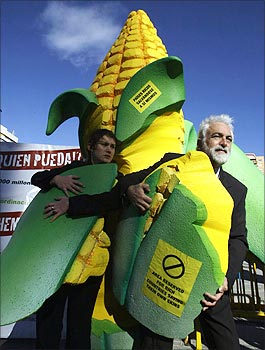
The United Nations recently said it expects to register a 'dangerous and unprecedented' shortfall in budgetary allocations for its World Food Programme and as a result of which food aid to millions of hungry poor in many countries may be affected.
World Food Programme executive director Josette Sheeran said that the organisation is hoping to reach 108 million people in 74 countries this year with food aid, but the UN body expects to receive only $3.7 billion of the $6.7 billion needed for 2009.
"We are actively cutting $3 billion of our programme -- which means a reduction in rations and programmes throughout the world, including those to the world's most vulnerable people," Sheeran told reporters.
In Bangladesh, for example, the agency sought to feed five million people this year, but must now cut back to reaching only 1.4 million, with a school feeding programme only feeding 70,000 children out of the original target of 3,00,000.
Sheeran said the food crisis is still raging in the developing world where high food prices are exacerbated by the impact of the current economic slump.
How serious is the global food crunch? How far is India responsible? What should it do to counter the problem? This slide show attempts to delve into the issues. Read on...
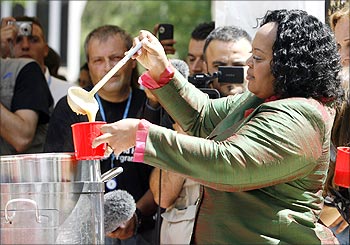
Scaling food prices a cause for concern
Last year the skyrocketting cost of food was a wake-up call for the planet. Between 2005 and the summer of 2008, the price of wheat and corn tripled, and the price of rice climbed fivefold, spurring food riots in nearly two dozen countries and pushing 75 million more people into poverty.
But unlike previous shocks driven by short-term food shortages, this price spike came in a year when the world's farmers reaped a record grain crop. This time, the high prices were a symptom of a larger problem tugging at the strands of our worldwide food web.
Data from the UN Food and Agriculture Organisation shows that in most developing countries, food prices are higher at present than it used to be a year ago.
Between March 2007 and March 2008, global food prices increased an average of 43 per cent, according to the International Monetary Fund. During that time period, wheat, soybean, corn, and rice prices increased by 146 per cent, 71 per cent, 41 per cent, and 29 per cent, respectively, according to the US Department of Agriculture.
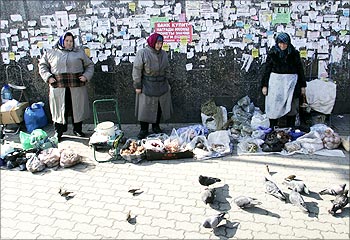
Increased prices led to food insecurity
Rising food prices contributed to a significant increase in food insecurity worldwide, particularly among poorer populations. Approximately 1 billion people -- or one sixth of the world's population -- subsist on less than $1 per day.Of this population, 162 million survive on less than $0.50 per day. At the household level, increasing food prices have the greatest effect on poor and food-insecure populations, who spend 50 to 60 percent or more of their income on food, according to the International Food Policy Research Institute.
Overall, increased food prices particularly affect developing countries, and the poorest people within those countries, where populations spend a larger proportional share of income on basic food commodities.
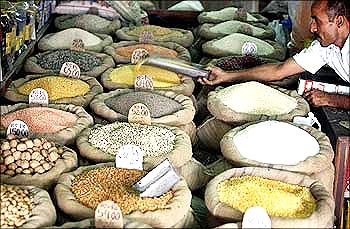
Is India's prosperity one of the causes?
Prosperity in countries like India is good but it triggers increased demand for better nutrition, which in turn leads to higher food prices, former US President George W Bush said in 2008, leading to a major hue and cry.
Prior to this, then US secretary of state Condoleezza Rice too had stated that 'apparent improvement' in the diets of people in India and China and consequent food export caps is among the causes of the current global food crisis.
Bush argued that there are many factors for the present crisis, only one of which was investment on biofuels like ethanol.
"Worldwide, there is increasing demand. There turns out to be prosperity in developing world, which is good. It's going to be good for you because you'll be selling products in the countries, you know, big countries perhaps, and it's hard to sell products into countries that aren't prosperous. In other words, the more prosperous the world is, the more opportunity there is," Bush had said.
"It also, however, increases demand. So, for example, just as an interesting thought for you, there are 350 million people in India who are classified as middle class. That's bigger than America. Their middle class is larger than our entire population."
"And when you start getting wealth, you start demanding better nutrition and better food, and so demand is high, and that causes the price to go up," he said.
Bush also listed change in weather patterns and increase in basic costs like that of energy as factors contributing to higher food prices.
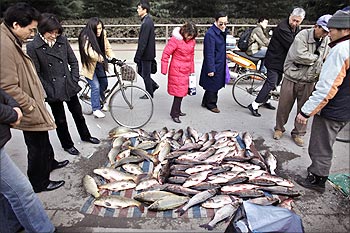
What actually led to the crisis
Several factors contributed to the rapid spike in global food prices. These are:
Subsequently, a significant increase in world cereal production in 2008 led to improved global cereal stocks and an associated reduction in the international prices of most cereals, representing a 50 per cent decrease in many cases since May 2008.
However, food prices remain high in most developing countries.
According to the UN Food and Agriculture Organization, food emergencies, resulting from the combined effects of chronic food insecurity and high food price levels, persist in 31 countries, including 20 African nations.
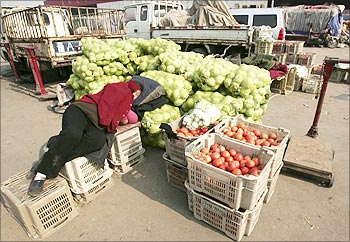
Measures undertaken
In response to the global food price crisis, in June 2008, the US Congress provided $770 million to USAID as part of the President's Food Security Response Initiative for international disaster and development assistance to address the needs of food insecure populations worldwide.
Of the total, $590 million represented funding for emergency humanitarian programming through USAID/OFDA and USAID's Office of Food for Peace, with remaining funding designated for development assistance through USAID's Bureau of Sub-Saharan Africa and Bureau of Economic Growth, Agriculture, and Trade.
In response to the severity of the food crisis and the need for prompt action, the World Bank Group set up the Global Food Crisis Response Program (GFRP) in May 2008 to provide immediate relief to countries hard hit by food high prices. The Bank response has been articulated in coordination with the United Nations' High-Level Task Force on food security.
Through its response, the Bank is supporting the implementation of the joint Comprehensive Framework for Action.
The World Bank Group increased GFRP to $2 billion in April 2009 to provide immediate relief to countries hard hit by food high prices. GFRP was created in May 2008 to reduce the threat high food prices and rising agricultural production and marketing costs pose to the livelihoods of the world's poor.
The money is used to feed poor children and other vulnerable groups, provide for nutritional supplements to pregnant women, lactating mothers, infants and small children, to meet additional expenses of food imports or to buy seeds for the new season.
GFRP has disbursed $757.6 million out of $1151 million in 33 countries as of June 11, 2009. An additional $49.4 million is being earmarked for programs in 9 countries.
The Bank also created a new Multi-Donor Trust Fund to facilitate the involvement of partners to support GFRP. As of April 2009, the Bank has mobilised $189 million in external funds for activities under GFRP.
These funds will be provided as grants to 16 countries.
Bank and International Finance Corporation are completing a feasibility study on a crop insurance pilot for maize small farmers.
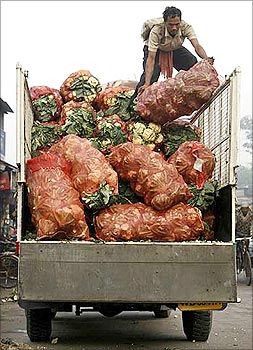
What should India do?
In an article in The Hindu MS Swaminathan, Member of Parliament (Rajya Sabha) and former chairman, National Commission on Farmers, wrote: